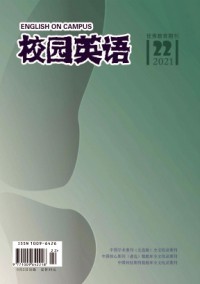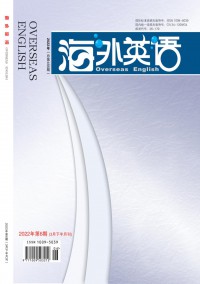英语长句翻译
前言:本站为你精心整理了英语长句翻译范文,希望能为你的创作提供参考价值,我们的客服老师可以帮助你提供个性化的参考范文,欢迎咨询。

[Abstract]TheaimofthisessayistotellushowtotranslateEnglishlongsentencesintoChinesecorrectlyandprecisely.ItcontainsthecomparisonbetweenEnglishandChineselongsentences,anddefinesEnglishlongsentence.ThecommontypesofEnglishlongsentencesareclassifiedintheessay,anditalsoexplainswhyandwherelongEnglishsentencesareusedrespectively.Inthethirdpartoftheessay,weproposesthestepsandmethodsintranslatinglongEnglishsentence.Inconclusionpart,wepointsoutthekeytobecomeagoodtranslatoristoreadandpracticeasmuchaspossible,andalsomentionsthesimilarwaysintranslatingChineselongsentencestoEnglish.
[KeyWords]longsentences;understanding;expressing;translating
【摘要】本论文主要是向大家介绍如何准确到位的将英语长句翻译为中文。作者比较了中英文句子结构和表达的不同特点,同时对英语长句作了定义,对常见的几种英文长句作了说明,并且分别介绍了英语长句发生的原因和背景。在论文第三部分作者提出了翻译英语长句的步骤与方法。在结论部分,作者指出成为一个好的译者关键是多读多练,同时也提出了将中文长句翻译成英文相似的方法。
【关键词】长句;理解;表达;翻译
1.Introduction
English-Chinesetranslationisaprocesswhichrequiresadetailedanalysisoftheoriginalsentencesinsuchaspectsasmeaning,structureandlogic,andwhich,asaresult,needsalongtimeofpracticetoperfect.However,translationismademoredifficultandcomplexbyfrequentappearanceoflongsentencesinthetwolanguages.Inthisessay,wediscusshowwecandevelopskillsinlongsentencetranslation.Whatisalongsentence?Alongsentenceisonewithseveralattributives,subordinateandadverbialclauses,whichareinterdependentonandlinkedtoeachother.Longsentencesarecharacterizedbyfrequentuseofattributiveandadverbialclauses,compoundstructure,parenthesisanddanglingstructure.Besides,whatmakeslongsentencesdifficulttotranslateisthefactthatChineseandEnglishmenhavedifferentthinkinghabit,whichnaturallyleadstotheirdifferencesinwaysofexpressionandsentencestructure.Thus,theemphasisofthisessayisonacomparisonbetweenthestructuresofEnglishandChinesesentences.ReasonswhythisessayisonacomparisonbetweenthestructuresofEnglisharealsodiscussed,andthetypesofarticleswherelongsentencesfrequentlyappearareshowntothereaders.Thepriorityofthisessayisgiventothesteps,whichshouldbetaken,andthemethodstobeusedinlongsentencetranslationandviceversa.
parisonbetweenEnglishandChinesesentences
2.1CommontypesoflongsentencesinEnglish
Generally,therearevarioustypesoflongsentences,whicharedifferentinstructures.
2.1.1“Sentenceswithattributiveclauses[1]P565--583
Onecommontypeoflongsentenceisonewithattributiveclauses.Whatisanattributiveclause?Anattributiveclauseisoneusedafteranountomodifythenoun.Attributiveclauses,althoughsharingthesimilarityofbeingmodifiers,aredifferentaccordingtotheirrelationshipwiththemainclause,andcanbedividedintoseveraltypes.
(i).Attributiveclausesuggestingcauseoreffect
Animportanttypeofattributiveclauseistheonesthatsuggestcauseoreffect.Intranslatingalongsentencewiththistypeofattributiveclause,therelationshipoftheattributiveclausewiththemainclause-whetheritisthecauseoreffectofthemainclause-shouldbedeterminedfirst.Then,basedonitsfunction,aproperconjunctivewordshouldbechoseninordertoshowthereadertherelationshipofthetwoclauses.
“ThereasonfordeterminingtherelationshipfirstisthatEnglishisalanguagewhichusesalargenumberofdifferentstructurestoshowtherelationshipbetweenclauses,whileinChinesesentences,wordsareemployedshowthereaderstherelationshipbetweenclauses.”[2]P120Touseanexampletoclarifytheprocess,
(1)Theimprovementinhishealthresultedfromthephysicalexerciseshedideverymorning.
Inthissentence,theattributiveclauseis“hedideverymorning”.Afterreadingthesentence,wecanfindoutthatthefactthat“hedidexerciseseveryday”isthereasonfor“hisimprovementinhealth”,thus,inEnglishChinesetranslationweshouldchoosetheChineseequivalenceof“because”tobeusedbeforetheattributiveclausetosuggesttherelationshipbetweentheattributiveandthemainclause,ThisEnglishsentencecanbetranslateinChinese,因为他每天早晨都锻炼,所以身体好了很多。
(ii).Attributiveclausesuggestingtime
Attributiveclausesometimesisusedtoshowthemainclause.Intranslatingthistypeofattributiveclauses,ananalysisoftherelationshipbetweenthemainandattributiveclausesisnecessarysoastochooseaproperChineseequivalenceoftheword“when”,“after”or“before”.
(2)Atseven,hewentuptolookatJohn,whowassleepingatthattime.
Inthissentence,theattributiveclause“whowassleepingatthattime”canberegardedasthetimewhentheactioninthemainclausetookplace.Asaresult,weshouldtranslatetheattributiveclauseasatimeadverbialclause,andtheChineseequivalenceoftheword“when”shouldbeputbeforetheattributiveclausetosuggestthetime.
(iii).Attributiveclausesuggestingtransitionturn
Attributiveclausecanalsobeusedtosuggesttransitionturn.Inthiscase,theChineseequivalenceoftheword“but”shouldbeputbeforetheattributiveclauses.Considerthefollowingsentence,
(3)Hedidn’twanttoseehiswife,who,unexpectedly,camebackaftertwodays.
Afterreadingthissentence,itiseasyforustofindoutthattheattributiveclause“who,unexpectedly,camebackaftertwodays”shouldberegardedasaturningpointofthemainclause,soitisequaltothissentenceinmeaning“Hedidn’twanttoseehiswife,butshecamebackaftertwodays.”Thus,intranslatingthissentence,weshouldputtheChineseequivalenceoftheword“but”beforetheattributiveclause”.
2.1.2Adverbialclause
“TheuseofadverbialclausescanalsoresultinlongEnglishsentences.Adverbialclausesarethoseusedtosuggesttime,placeorreasonofthemainclauses.Adverbialclausescanbeputeitherbeforeorafterthemainclauses,andthespecificrelationshipbetweenthemainclauseandtheadverbialclausecanbeeasilyidentifiedbecausetherelationshipisclearlysuggestedbythedifferentwordusedbeforetheadverbialclause.”[3]P563Forinstance,anadverbialclausebeginningwiththeword“when”naturallysuggeststime,andonewiththeword“because”paredwithattributiveclause,adverbialclauseisgenerallyeasiertotranslate.IntranslatingtheEnglishsentenceintoChinese,theadverbialclausesaremostlyputaheadofthemainclausesinChinese.Wecanlookatthefollowingsentences,
(4)“Pleaseturnoffthelightwhenyouleavetheroom.”[4]P140
Intranslatingthissentence,weshouldputtheadverbialclausewhenyouleavetheroombeforethemainclauseaccordingtothecommonwayofexpressioninChinese.
2.1.3Compoundsentence
“Compoundsentencesareoftenlongsentencesbecauseacompoundsentenceusuallyincludestwoclauses.What,however,poundsentencesusuallysuggestasequenceofactionsthattakeplaceoneafteranother,andthewordsmostlycommonlyusedtoconnectthetwoclausesinacompoundsentenceare“and”and“but”.”[5]P483
(5)Sheworkedhard,butshefailedinthefinalexam.
Afterreadingthissentence,themeaningisquiteapparenttousbecausethestructureofcompoundsentencesisthesameasthatofmostChinesesentences.Naturally,intranslatingcompoundsentences,wejustneedtotranslateitwithoutchangingthestructureoftheoriginalsentence.
2.1.4Parenthesis
ParenthesisisanotherattributiontolargequantitiesoflongsentencesinEnglish.“InanEnglishsentence,theparenthesiscanbeaword,aphrase,orasentence,andbeforetranslatingthesentenceweshouldfirstfindouttherelationshipoftheparenthesiswiththemainsentenceanditsfunctioninaneffortthatthetranslatedversioncomplieswiththeChinesewayofexpression.”[6]P612-616
(6)Hegetsupearlyeverymorning,whetheritissummerorwinter,todoexercises.
Similarly,intranslatingthissentence,puttheparenthesis“whetheritissummerorwinter”atthebeginning,followedbythemainsentence“Hegetsupearlyeverymorningtodoexercises.”
2.2DifferencesinEnglishandChinesesentencestructures
2.2.1Differenceinwaysofthinking
Differentpeopleshavedifferentwaysofthinking,sotheirlanguages,whichareusedtoexpresspeople’sthoughts,arealsodifferent.
“InEnglish,resultsareusuallygivenaheadofthecauses,whileinChinese,causesappearbeforetheireffects.ThisisbecauseChinesepeopleputemphasisonthenaturalorderoftheverbsaccordingtothetimetheactionstakeplace.Forexample,
(7)Tragediescanbewritteninliteraturesincethereistragedyinlife.生活中既有悲剧,文学作品就可以写悲剧。”[7]P199
Andlookatthisexample,
(8)Hebegantoreadabookafterhavingsupper.
Afterreadingthissentence,wecanidentifythattheactionhavingsuppertakesplacebeforetheactionreadabook,butinthesentence,thelatterisputbeforetheformer.SointranslatingEnglishsentencefirstcarefullyfindoutthetimesequenceoftheverbs,andthenputthemintoChineseaccordingtothetimesequence,asistheChinesewayofexpression.
2.2.2Differenceintheuseofprepositions
“R.Banderusedtosay:“Aprepositionmaybedefinedasaconnectingwordshowingtherelationofanounorsubstituteforanountosomeotherwordinthesentence.…PrepositionsappearconstantlyinEnglishspeechandwriting.…”Likethesentences,
(9)Theanycolorsofarainbowrangefromredontheoutsidetovioletontheinside.彩虹有多种颜色,外圈红,内圈紫。”[8]P50-51Englishsentencescannotwithoutpreposition,butChinesesentencesarenotuseoromitpreposition.
2.2.3Differenceinrelativepronoun
RelativepronounisaveryimportantpartinEnglish,butinChinesethere’renosuchwordsasrelativepronouns.Relativepronounsarefrequentlyusedinsubordinateclauses,suchasobjectsubordinateclauseandattributiveclause.Incomparison,pronounsareusedinsteadofrelativepronouns.
(10)SheturnedtoTom,whowaswatchingTV.她转向汤姆,而他正在看电视。
2.2.4DifferentorientationsofChineseEnglishsentences
“Chineseischaracterizedbyitsemphasisonmeaning,whileEnglish,onthecontrary,paymuchmoreattentiontostructureandlogicofthesentence.Areader,whilereadingaChinesesentenceorarticle,musttryhardtofindoutitsmeaning,butthemeaningofEnglishsentencesismuchclearerbecauseitsstructuremakesthemeaningquiteclear.”[9]P53/58
(11)Hesteppedrightinafterthem,likeitornot,andhewasdeterminedthatnothingasprettyasgoodmannersshouldkeephimfromachanceofenlightenment.他不管人家欢迎不欢迎,紧跟着他们走了进去。什么礼貌不礼貌,他顾不得这一套了。他决心不错过这个机会,把心里的问题弄明白。
AdetailedcomparisonbetweentheabovetwosentenceswillshowhowtheEnglishsentences,ingeneral,differfromeachother.
2.2.5Differentrelationofclauses
“AnotherbigdifferencebetweenEnglishandChinesesentencesliesinthemorefrequentuseofclausesinEnglishthaninChinese.ThestructureofanEnglishsentencecanbecomparedtoa“grapevine”,whichmeansthatmanywordsinaEnglishsentencehavetheirownclause.Incontrast,thewordsinatypicalChinesesentencedon’thavetheirclauses,butappearintimesequence,eachplayingequallyimportantroleintheChinesesentence.”[10]P43
(12)Lily,whoisaveryactivegirlatschool,becomesquietassoonasshearriveshome,whichmakesherparentsquitepuzzled.莉莉在学校里非常活跃,但一回到家却变得很安静,这让她的父母感到很迷惑。
IntheaboveEnglishsentences,therearetwoattributiveclausestomodifytwosegmentsinthesentence,whileintheChinesesentence,allthesentencesareequallyimportantandcomeoneafteranotherintimesequence.
3.StepsandmethodsinlongEnglishsentencetranslation
LongsentencesmakeupalargeportioninEnglish,andthereareseveralreasonsforitsfrequentappearance.
3.1ReasonsforfrequentappearanceoflongEnglishsentences
3.1.1Frequentuseofmodifiers
ComparedwithChinese,modifiersaremuchmorefrequentlyusedinEnglish,suchasattributiveclauses,adverbialclausesandappositives.ButinChinese,thespecificnounsarenotmodified,butareexplainedbyemployinganotherindependentsentence.
(13)Thesestudents,whorarelydoanyhouseworkathome,willserveaswaitersintherestaurantneartheschool,whichdrawsalargenumberofcustomerseveryday.
Themainstructureofthissentenceis“thestudentswillbewaitersintherestaurant”,butthesentenceismadelongbytheuseoftwoattributiveclauses,oneofwhichistomodifytheword“students”,andtheotherofwhich“therestaurant”.ButinChinese,thissentencewillbeputasfollowed.这些学生在家几乎不做家务,而他们将要到学校附近的一家餐馆去当侍者,而这家餐馆每天食客云集。WecanseethatthesingleEnglishsentenceisseparatedintothreeclauses,eachexpressingaspecificmeaningwithoutemployinganysubordinateclauses.
3.1.2Complexstructures
“ComparedwithChinese,inwhichverbsarearrangedintimesequence,Englishsentencesaremuchmorecomplexwiththeuseofvariousclauses,parenthesis,appositivesandprepositions.ChinesestudentsusuallyfindithardtoidentifythemainstructureoflongEnglishsentences,soitisnecessaryandquitehelpfultolearnthesegmentsthatmakethesimplesentenceslong.”[11]P61
(14)He,insteadofstandingback,walkedforwardtofacetheaccuser,withotherslookingathiminastonishmentaswellaspuzzlement.
ThisisatypicallongEnglishsentencewithcomplexstructures.AstudentwithoutathoroughknowledgeofEnglishgrammarisboundtofailtounderstanditsmeaning.Tounderstandlongsentences,astudyofEnglishgrammarisrequired,andalargeamountofreadingofalltypesofarticlesinEnglishisalsoveryhelpful.
3.2Typesoflongsentenceswriting
Inordertoknowbetterhowtotranslatelongsentences,itisnecessarytoknowthetypesofwritingswherelongsentencesaremostfrequentlyused.Generally,longsentencesfrequentlyappearinofficialdocuments,scientificreports,andnewspapers.
(i).Lawdocuments
Thereasonwhylongsentencesarefrequentlyusedinlawdocumentsisthatlongsentencesaremoreformalcomparedwithshorterones,andofficialdocumentsmustbewritteninaformaltoneandstyle.Forexample,
(15)“Anyclause,covenantoragreementinacontractofcarriagerelievingthecarrierortheshipfromliabilityforlessordamageto,orinconnectionwith,goodsarisingfromnegligence,fault,orfailureindutiesandobligationsprovidedinthisarticleorlesseningsuchliabilityotherwisethanprovidedintheserulesshallbenullandvoidandofnoeffect.”[12]P256
(ii).Scientificdocuments
Longsentencesalsomakeupalargeportioninscientificdocument,suchastechnologyspecifications.Wecanlookthetypicalexample.
(16)“Butitisrealizedthatsuppliesofsomeofthemarelimited,anditisevenpossibletogiveareasonableestimateoftheir“expectationoflife”,thetimeitwilltaketoexhaustallknownsourcesandreservesofthesematerial.”[13]P6
(iii).Newspapers
Newspapersusuallyarequiteabundantinlongsentences,butnotallkindsofarticlesinnewspapersarelong-sentence-oriented.Onlyformaltypesofarticles,suchasarticlesaboutpolitics,economy,sports,economyandcultureusealotoflongsentencesnormally.Forexample,
(17)“TheChinaBandingRegulatoryCommission(CBRC)alsosaidonFridaymorereformmeasuresareinthepipelinethisyear,includingpressingaheadwithjoint-stockreformsoftheIndustrialandCommercialBankofChina(ICBC),broadeningreformsofruralcreditcooperationandinitiatingkeyreformmeasurestothepostalsavingssystem.”[14]P4
ThereasonforfrequentappearanceoflongsentencesinEnglishhasbeenanalyzed.ThenwhatarethecommonwaysoftranslatinglongsentencesinEnglish?
Regardlessofwhichkindsofarticlescontainlongsentences,therearecommonstepsandmethodsintranslatinglongEnglishsentences.Generally,thestepstakenshouldbe,first,understandingthestructureandmeaningofthesentencecorrectly,and,second,expressingoutthesamemeaninginChineseinanaturalwayofexpression.
3.3StepsintranslatinglongEnglishsentences
Thestepsthatshouldbetakenintranslationareunderstandingandexpressing.Astrictadherencetothisprinciplewouldbesuretomakethetranslationprocessmucheasier.
3.3.1Understanding
“Understandingisthefirstandalsothemostimportantstepintranslationoflongsentences.Aslongsentencesareusuallyquitehardtounderstandbecauseoftheirbeingcomplex,correctunderstandingoftheoriginalsentenceisdirectlylinkedtocorrecttranslationwithoutchangingthemeaningoftheoriginalsentence.TounderstandalongEnglishsentencethusrequiresananalysisofthemainstructure,theexactmeaningofspecificwordsthattendtobemisunderstood,distinguishingthemainclausesfromthesubordinateclauses,identifyingthelogicofdifferentsegmentsineachclause,and,finallyandmostimportantly,findingoutthecorrectmeaningofthesentence.”[15]P13
(i).Findoutthe“trunk”ofthesentence
By“trunk”,wemeanthemainstructureofthewholesentence.ZhangYanholdtheviewthat“Findingoutthemainstructureofthesentenceisquiteimportantbecausethisoftenhelpsthereaderidentifywhichclausesareusedtomodifywhich,andthefunctionandrelationofeachclause.Inaword,themainstructureofsentenceincludessubject,verbandobject(ifthereisanyobjectinthesentence).Asubjectisalwaysanoun,indicatingthedoeroftheactionoftheverb;averbalwaysindicatesanaction;anobjectisusedtoindicatethebeareroftheaction.AtypicalEnglishsentencemustcontainasubjectandaverb,andtheobjectcanbeomittedifnotneeded.What’smore,eachEnglishsentenceshouldonlycontainonemainstructure.”[16]P121
(18)Eachcommentfromher,whichseemedquitedisappointingtoeveryoneelse,madeTom,however,veryexited.
Themainstructureofthissentenceis“eachcommentmadeTomexited.”Ifreaderscanseparatethemainstructurefromtheoriginalsentence,thenthemeaningofthisseeminglycomplexlongEnglishsentencebecomesquiteclear.”
(ii).Analyzethemeaningofimportantwords
Afterfindingoutthemainstructure,whatthetranslatorshoulddoistoidentifythecorrectmeaningofthewordsthatseemtohavesomedifferentmeanings.InEnglish,therealsoexistsomewordsthatmayhavedifferentmeaningsaccordingtothecontextinwhichthewordsareused.Thus,thetranslatorneedstoidentifythemeaningofthewordsinthesentence.Themostefficientwayistoconsultthedictionarytofindoutthedifferentmeaningsawordmayhaveandthedifferentcircumstancesthewordisusedaccordingtotheirmeaning.Thisstepisespeciallyimportantinunderstandingthemeaningoftheimportantwordsinthesentences.
(19)Heheardagirlcryingoutside.
Inthissentence,thewordwhichhastwowaysofunderstandingistheword“crying”.Asweknow,theword“cry”hastwomeanings:onebeingtheactionofsheddingtears,andtheotherbeingtheactionofshouting.Tofindoutwhichisthecorrectmeaningoftheword“cry”inthissentence,thereaderneedstotakethewholecontextintoconsiderationbecausethespecificmeaningofaworddependsonthewholecontext.
(iii)Identifysubordinateclause
Afterfindingoutthemainstructureandmeaningofthewordsinasentence,subordinateclausesmustalsobeidentifiedtofindouttherelationbetweenthesubordinateclausesandthewordsandthemainclause.Asisknown,eachsubordinateclausehasitsownfunction,eithertomodifyaspecificword,ortoindicateitsrelationwiththemainclause.Whetherasentenceiswellandappropriatelytranslatedlargelydependsonwhetherthesubordinateclauseisthoroughlystudied.
(20)Heopenedthebookthathisfathergavehimasagiftathisthirteenthbirthday.
Themainclauseofthissentenceis“heopenedthebook”,andthat“hisfathergavehimasagiftathisthirteenthbirthday”isanattributiveclausetomodifythebook.Sothemainclauseshouldfirstbetranslated,andthentheattributiveclauseshouldbetranslatedinanotherclauseorsentencetofurtherintroducetothereaderthesourceofthebook.Thus,thesentenceshouldbetranslatedasfollowed.他打开了那本书,那本书是他爸爸在他13岁生日时作为礼物送给她的。
(iv).Getthegeneralideaofthesentence
Thereasonwhywedon’ttendtochangethemainideaoftheoriginalsentenceisthatwedon’ttendtochangethemainideaoftheoriginalsentenceinthetranslatedversion.Eventhoughareadermaynothaveanydifficultyinunderstandingthemeaningofeachofthewordsinasentence,hemayfindithardtofindoutthemainideaofthesentence,thusmakingitimpossibleforhimtotranslatethesentencecorrectly.
Ingeneral,understandingisthefirststepthatshouldbetakenintranslatinglongsentences.Toachievecorrectunderstandingofthesentences,areadermustbegoodatEnglishgrammar,befamiliarwithvarioustypesofEnglishsentencesandafairlylargevocabulary.
3.3.2Expressing
Afterunderstandingthemeaningandstructureoftheoriginalsentence,thenextsteptobetakenistoexpressthemeaninginthetargetlanguageinarationalway.
“EnglishandChinesehavedifferentwaysofexpressions,grammaticalrulesandthinkinghabits,soitisnaturalthatthesamemeaninghasdifferentstructureswhenexpressedinEnglishandChinese.SowhentranslatingEnglishsentencesintoChinese,thesentencestructureshouldbechangedinordertobeacceptableinChineselanguage.Thisstepisparticularlydifficultinlongsentencetranslationastranslatorsusuallyfinddifficultiesinwheretoputthesegmentsinthetargetedlanguage.”[17]P25
AfterreadingtheEnglishsentence,thereaderneedstoidentifythefunctionofeveryword,phrase,andclause,andthenputthesesegments,accordingtotheirfunction,intheproperplaceinconformationwiththegrammaticalrules,wayofexpressionandthinkinghabitofChinese.Forexample,attributiveclausesareusedasmodifiersofnouns,buttheyshouldbeputbeforethenounratherthanafterthenoun.Foranotherinstance,timeadverbsareoftenputattheendofasentence,whileintheChineselanguage,thetimeadverbsshouldbeputatthebeginningofasentence.Similarly,inEnglish,nouns,ratherthanverbs,aremorefrequentlyusedtoindicateanaction,sointhetranslatedChineseversion,thenounshouldbetransformedintoaverb,asverbsarefrequentlyusedinChinesethannouns.
(21)Hebecameangrierasthenoisedidn’tstop.
Afterreadingthesentence,weknowthat“asthenoisedidn’tstop”isthereasonforthefact“hebecameangrier”.InChinese,thereasonisusuallyfirstgivenbeforetheaffectedinconformationwithtimesequence,sothereasonshouldbeputbeforetheeffectinChinese.Thus,thetranslatedversionshouldbe,
“噪音没有停止,这让他更生气了。”
3.4“MethodsintranslatinglongEnglishsentences”[18]P149-158
Besidesknowingthestepstakenintranslatinglongsentences,moreimportant,perhaps,istomasterthemethodsandskillsintranslatinglongsentences.ZhangPeijiinhisbookACourseinEnglish-ChineseTranslationshowshisopinionintranslatinglongEnglishsentences.
3.4.1Obversetranslation
AlthoughEnglishandChinesesentencesaredifferentinthewayofexpression,somesentencesinEnglisharethesameinwordorderandwayofexpressionasChinesesentences.Thus,intranslatingthesesentences,theoriginalwordorderneednotbechanged,makingthetranslationprocessrelativelyeasier.
(22)BeforeIhadmydinner,Iwentouttoseewhethermyunclehadcomeback.
Inthissentence,“beforeIhadmydinner”isatimeadverbialclause.InChinese,thetimeadverbialclauseisusuallyputatthebeginningofthisadverbialclause.InChinese,thetimeadverbialclauseisusuallyputatthebeginningofasentence,sothetranslatedversionofthisadverbialclausedonotneedtobechangedtoanotherposition.Thus,thetranslateversionshouldbe“吃饭之前,我出去看看叔叔有没有回来。”
(23)Heknockedatthedoor,and,havingheardnosoundfrominside,begantoshout.
Inthissentence,therearethreeverbs:“knock”,“hear”,and“shout”.Afterreadingthissentence,wecanfindoutthatthethreeverbsarearrangedintimesequence,asisthewayverbsarearrangedinChinesesentences.Thus,whentranslatingthissentence,thewordorderneednotbechanged,anditshouldbetranslatedasfollowed:“他敲了敲门,听到里面没有声音,就开始喊。”
3.4.2Reversetranslation
MostofEnglishsentenceare,becauseofthethinkinghabitofEnglishmen,differentinwordorder,phraseorderorclauseorderfromChinesesentences.SomesentencesarecompletelyreversedaccordingtoChinesegrammar.Translatingthesesentences,asaresult,requiresthetranslator,first,toputthereversedsegmentsinthenormalorderbasedonChinesegrammar.Thisiscalledreversetranslation.
(24)Hepickedupthebookhismothergavehim.
Thissentencecontainsanattributiveclausetomodifythenoun“thebook”,butweknowthatinChinese,modifiersaregenerallyputbeforethenounitmodifies.So,inthetranslatedsentence,theattributiveclauseshouldbeputbeforethenoun.However,thereisanexception.Iftheattributiveclauseistoolong,itisnotpropertoputthetranslatedclausebeforethenoun.Thisisbecause,ifthustranslated,thetranslatedversionwouldsoundtooawkwardbasedonChinesegrammar.Thedetailsofthiskindoftranslationwillbediscussedlater.
So,thetranslatedversionoftheaboveexampleis“他拿起了妈妈给他的那本书。”
3.4.3Reverse-and-obversetranslation
SomesentencesinEnglishcontainboththesegmentsthatarethesameinwordorderasChineseandthosesegments,whicharedifferent.So,intranslatingthesesentences,theformershouldbetranslatedbyusingobversetranslation,andthelattershouldemployreversetranslation.Bothreverseandobversetranslationshouldbeemployedtotranslatedifferentpartsofthesentence.
(25)AsTomisatpresentwritingareport,thebookyougavehimshouldbeofmuchhelptohim.
Inthissentence,“AsTomisatpresentwritingareport”isanadverbialclauseindicatingthecause,and“thebookyougavehimshouldbeofmuchhelptohim”istheeffect,sothesentencestructureingeneralisthesameasaChinesesentence.However,thissentencealsocontainsanattributiveclauseusedtomodifythenoun“book”.Ashasbeendiscussedbefore,theattributiveclauseshouldbeputbeforethenounitmodifies.Inthiscase,bothobverseandreversetranslationisusedintranslatingthissentence.Thetranslatedsentenceis“他正在写报告,所以你给他的那本书一定对他有帮助。”
MostofthelongsentencesinEnglishareofthistype,thatis,requiringbothobverseandreversetranslation.So,itisrequiredofthetranslatortofirstanalyzethestructureofthesentenceandthenunderstandthemeaningofthesentence.TheneststepistotranslatethesentenceinthecorrectorderandinthecommonwayofexpressioninChinese.
3.4.4Componenttranslation
Componenttranslationisgenerallyusedinattributive-clausetranslation,providedthattheattributiveclauseisrelativelytoolongtobeputbeforethenouninthetranslatedversion,andontheconditionthattheattributiveisnotsocloselyrelatedtothemainclauseinmeaning.Generally,theattributiveclausecanbetranslatedasaseparatesentencefromthemainclause,oritcanbetranslatedasanadverbialclause.
(26)Hedecidedtogotothemarket,whichwasfarfromhishome,sohetookataxi.
Inthissentence,theclause,“whichwasfarfromhishome”isusedtomodifythenoun“themarket”,butitisnotsocloselyrelatedtothemainclauseinmeaning.Rather,itcanberegardedasaturningpointinthesentence,soitcanbeseparatedfromthemainclause.Sothetranslatedversionis“他决定去那个市场,而那个市场离他家很远,所以他打了车去。”
(27)Hechoosetheredonewhosecolorheliked.Inthissentence,theattributiveclause“whosecolorheliked”canberegardedasthereasonwhy“hechoosethered”,sotheattributiveclausecanbetranslatedasanadverbialclauseindicatingreason.Thetranslatedversionis“他选了那个红的,因为他喜欢那种颜色。”
(28)Heleftatoneo’clocklastnight,whenalltheothersweresleeping.Inthissentence,theattributiveclauseisusedtoindicate“thetimewhenheleft”,sothisclausecanberegardedasatimeadverbialclause.Besides,intranslatingthissentence,atransitionalwordcanbeusedtolinkthetwoclausestomakethewholesentencenatural.Thetranslatedversioncanbe“他是昨天晚上1点走的,那时候,其他人都在睡觉。”
Itcanbeseen,inthetranslatedsentence,thetransitionalphrase“那时候”isusedtoconnectthetwoclauses,makingthewholesentencesoundnatural.So,inaword,attributiveclausesthathavecloserelationwiththemainclauseshouldbetranslatedandputbeforethenounasmodifiers,andthoseattributiveclausesthatarenotusedtomodifythenounandwhicharenotsocloselyrelatedtothemainclauseshouldbetranslatedasadverbialclauses.
3.4.5Translationbyrearrangementoftheoriginalsentence
TherearesomesentencesinEnglish,especiallyinlawdocumentsandtechnologydocuments,whichhaverathercomplexsentencestructures,which,withoutathoroughstudyofthestructure,wouldbetoodifficulttotranslate.Inthiscase,thewholestructureoftheEnglishsentencemustbechangedinorderthattheChineseversionshouldcomplywithChinesegrammaticalrules.Thiskindoftranslationisachievedbyrearrangementoftheoriginalsentence.
(29)PetrahadbecometheleaderofthegirlsassoonasshesnappedoutofheroriginaldepressionatcomingtoPrague.
Thissentencecontainsfourverbs-cometo“Prague,depress,snapoutofthedepression,andbecametheleader.”InChinese,thefourverbsshouldbearrangedintimesequence,sotheorderoftheverbsshouldbe“cometoPrague,depress,snapoutandbecometheleader.”Sothetranslatedversionshouldbe“佩德到了布拉格,原是满怀抑郁,后来变得开心起来,就立刻成了女孩子们中间的领袖。”
(30)Icouldn’tbeataboywhohadn’tgotarelationintheworldandwhosefatherhadlefthimtomebecausehethoughtI’dbekindtohim.
Inthissentence,therearetwoattributiveclausestomodifythenoun“theboy”,andthere’sanadverbialclauseindicatingthereasonofthesecondattributiveclause,and,what’smore,where’sanobjectsubordinateclause“I’dbekindtohim”.HowcanweputtheseclausesinChinesesentences?
Afterreadingthewholesentence,wefindoutthattherearefourmeaningsinthissentence,andweshould,asusual,putthesemeaningsintimesequence.Thus,theordershouldbe:first,“hehadn’tgotarelationintheworld”;second,“hethoughtI’dbekindtohim”;third,“thefatherlefthimtome”;fourth,“Icouldn’tbeataboy.”So,thetranslatedversionis:一个举目无亲的孩子,而且他父亲当初是认为我会待他好才把孩子托给我的,我总不能打他吧。
So,thegeneralprincipleintranslatinglongEnglishsentencewithcomplexstructureistoanalyzethestructureofthesentence,understandtherelationbetweentheclauses,understandthemeaning,rearrangethesentencestructureandexpressthemeaningoutingoodChineselanguage.
TheabovearethegeneralmethodsthatshouldbeusedintranslatinglongEnglishsentencesintoChinese.Agoodtranslator,however,shouldbeabletousethesemethodsincombinationwhenevernecessary.
4.Conclusion
English-Chineselong-sentencetranslationis,ingeneral,quitedifficultforeventhemostexperiencedtranslators,somuchpracticeisneededbeforeatranslatorcanreallybeateasewithlong-sentencetranslation.However,itshouldbepointedoutthat,onlypracticeisnotenough.Besidesalotofpractice,agoodtranslatorshouldalsoreadasmanyaspossibleEnglishandChinesebooksinallfieldsinordertobefamiliarwithalltypesofsentencestylesandacquireafairlylargescopeofknowledge.
Inthisthesis,wehavediscussedthestepsandmethodsintranslatinglongEnglishsentencesintoChinese,however,infact,thestepsandmethodsoftranslatinglongChinesesentencesintoEnglisharethesameasthoseinEnglish-Chinesetranslation.Thereforeabriefdiscussionwillbeprovidedhere.
Understandingandexpressionare,similarlythetwostepstobetakeninChinesetoEnglishtranslationoflongsentences.Tounderstandthecorrectmeaningandstructureofthesentencerequiresthetranslatortoanalyzethemainstructureofthesentence,tofindouttherelationsoftheclauses,andtogetthegeneralideaofthesentence;ExpressionmeanstoexpressthemeaninginanaturalwayinEnglish.Afterunderstandingtheoriginalsentence,thetranslatorshouldrearrangetheclausesandmodifythetranslatedversiontomaintaintheoriginalstyleofthesentence.
Bibliography
[1]张道真.实用英语语法(1995年修订重印本)[M].北京:外语教学与研究出版社,1996
[2]罗艳秀.英语长句翻译技巧[J].黄山学院学报,2005,2,7(1)
[3]章振邦.新编英语语法教程第三版学生用书[M].上海:上海外语教育出版社,2002
[4]张培基.英汉翻译教程[M].上海:上海外语教育出版社,2002
[5]同[1]
[6]同[1]
[7]林大津.跨文化交际研究——与英美人交往指南[M].福州:福建人民出版社,1996
[8]连淑能.英汉对比研究[M].北京:高等教育出版社,2002
[9]同[8]
[10]王治奎、温洪瑞等.大学英汉翻译教程[M].山东:山东大学出版社,1998
[11]邓红顺.从英汉词序差异看长句翻译[J].株洲师范高等专科学校学报,2001,8,6(4)
[12]同[10]
[13]陈桂琴.科技英语长句翻译方法例析[J].中国科技翻译.2005,8,18(3)
[14]Janecheng,Chinaoutlaws[z].ChinaDaily,Jan22—23,2005.5
[15]同[10]
[16]张雁.英汉长句翻译教学探讨[J].宁波工程学院学报,2005,6,17(2)
[17]同[10]
[18]同[4]



